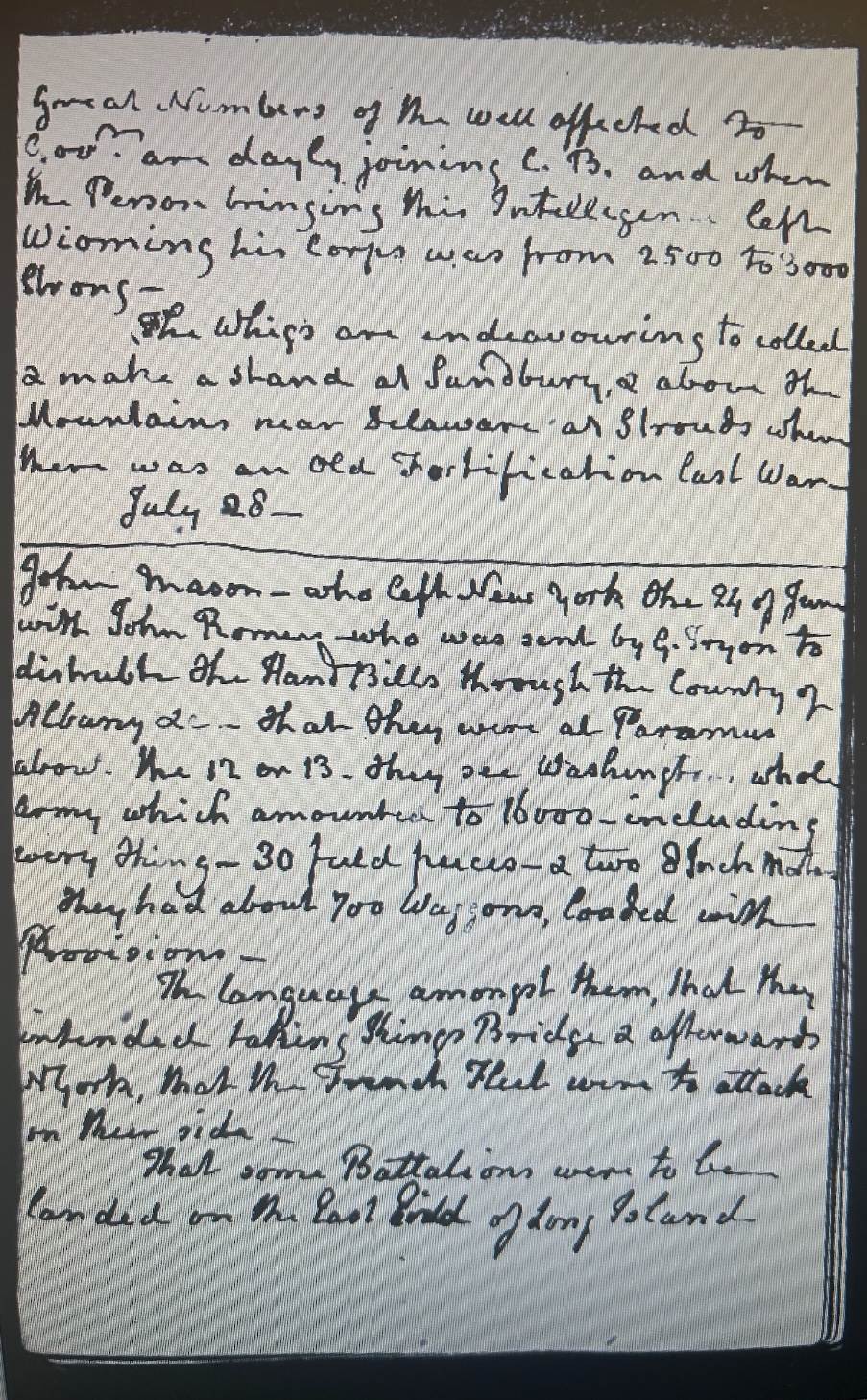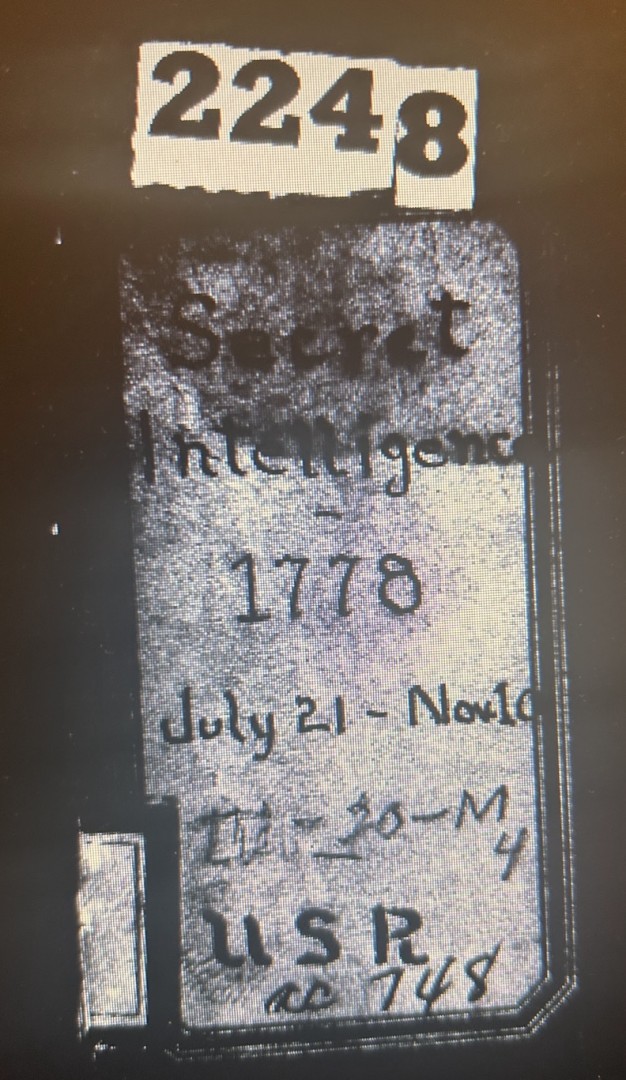British Intelligence-Gathering during the Revolutionary War
In the David Center for the American Revolution’s microfilm holdings at the American Philosophical Society, there is a memorandum book of military intelligence gathered by the British Army in 1778. A close examination of the book sheds light on both broader British war aims and the key sources of intelligence they relied on to prosecute the war effort.
The dimensions of the Revolutionary War changed significantly in 1778. During the first three years of the war, the conflict was confined to North America. But with the American victory at the Battles of Saratoga in October 1777, France decided to join the war on the American side, and their alliance was officially cemented in February 1778. With France now in the war, the conflict became a global struggle between Britain, France, and their respective empires.
Given the military setbacks against the Americans and the looming war with France, Britain sent peace commissioners to America to negotiate a settlement. Known as the Carlisle Peace Commission, they offered self-rule for Americans as subjects of the British Empire. Congress rejected these offers, however, refusing to accept anything short of full independence. Nonetheless, the British hoped that the proposal would encourage the American public to favor a negotiated settlement.
Stemming from this hope, one of the main goals of British intelligence was to get a better sense of the American public’s view towards the Revolution. The memorandum book contains a section labeled “Querys” which lists questions to be asked of informants. One question was: “What is the Temper of the Inhabitants in General since the Rejection of the negotiation proposed by the Th. Coms. are they disposed to acquiesce, or is it probable any Considerable body would take up arms, & Second any Efforts that might be made to Suppress the usurpers & Restore the Spirit & form of the British Constitution[?]”
British intelligence received mixed news. Abraham Maybee, a Loyalist sent to gather intelligence west of the Hudson River, brought back some encouraging news in September. He reported that although Revolutionary authorities had called out the militia, most inhabitants hid in the woods rather than be forced into service. Other intelligence, though, painted a more complicated picture. An entry in October states that “The Voice of the Country for Independence the friends of conciliation silent or date not declare themselves.” The only real reason to hope that Americans might alter their stance was that the French alliance was very unpopular, as Americans suspected France would try to conquer them after they defeated Britain.

The memorandum book also shows that the British sought to learn American military movements. Manuel Elderback traveled through Westchester County, New York on an intelligence gathering mission. He reported that the Americans had a small force at Dobbs Ferry, but that George Washington had moved an army of 10,000 men to White Plains. Elderback further claimed that the Americans sent 4,000 men northward to oppose attacks from Loyalists and British-allied Indigenous warriors.
The memorandum book highlights just how dependent the British were on Loyalists for intelligence during the war. The British high command generally had only a limited understanding of the people and the geographies they contended with. Loyalists provided an invaluable source of information given their knowledge of the local area, as well as their many social connections that gave them access to intelligence unknown to British military leaders.
Yet it wasn’t just white Loyalists who were essential to British intelligence, but also enslaved people of African descent. One entry in the book notes that “James a Negro belonging to Gilbert Ogden at North Castle” came to British lines with information. He reported the movement of Washington’s army as well as the construction of fortifications in Quaker Hill, near the New York-Connecticut border. Enslaved people were often the best situated to gather and pass along intelligence.
Although a relatively small source, this memorandum book tells us much about the Revolutionary War. It shows how the British hoped to win over the American public at this critical juncture, and how they depended on a variety of groups, including Loyalists and enslaved people, for intelligence in prosecuting the war.


